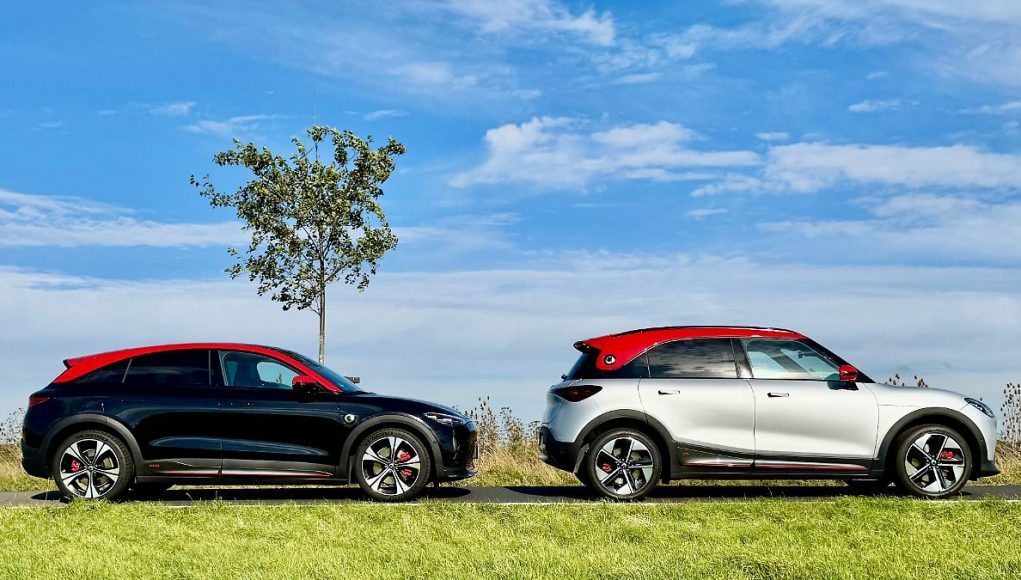The Geely Group has long since built up an entire brand conglomerate with a diverse model landscape. ntv.de took a close look at the three small car offers Smart #1 Brabus, #3 Brabus and Volvo EX30 Twin Motor.
Geely is, so to speak, the Chinese counterpart to Volkswagen and Li Shufu is a bit like Ferdinand Piëch, the counterpart, so to speak: He has created a premium car brand conglomerate and has thus become a full-range retailer. So not quite yet, the upper luxury segment is still missing. But perhaps the mission has not yet been accomplished. Geely not only owns well-known brands such as Lotus and Volvo, but also ten percent of Mercedes and half of Smart.
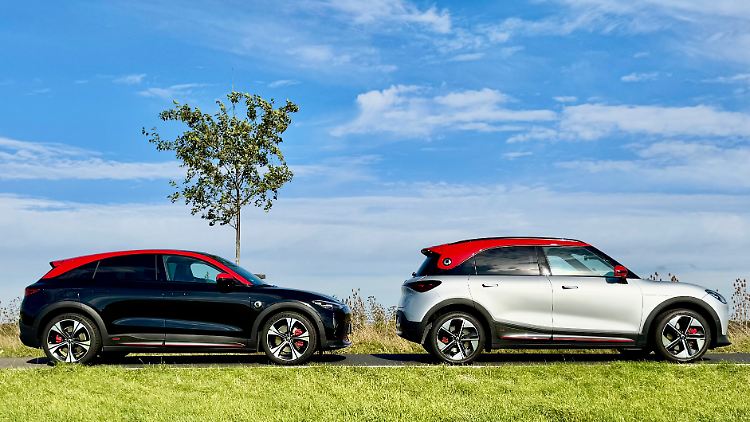

With its flowing roofline, the Smart #3 is a little more elegant, while the headroom in the #1 seems generous.
(Photo: Patrick Broich)
And at this point the first two protagonists of this article appear: namely the two Brabus versions of the Smart models #1 and #3. What you need to know is that since Smart reinvented itself with the joint effort of Geely and Mercedes, the label's philosophy and technology have changed. Gone are the days of minimal dimensions (less than three meters in external length), Smart is starting in the conventional small car category. And here Smart is at least 4.27 meters (Brabus three centimeters more) at the top. The #3, which has a modified body shape, is actually a class higher at 4.40 meters. But first things first.
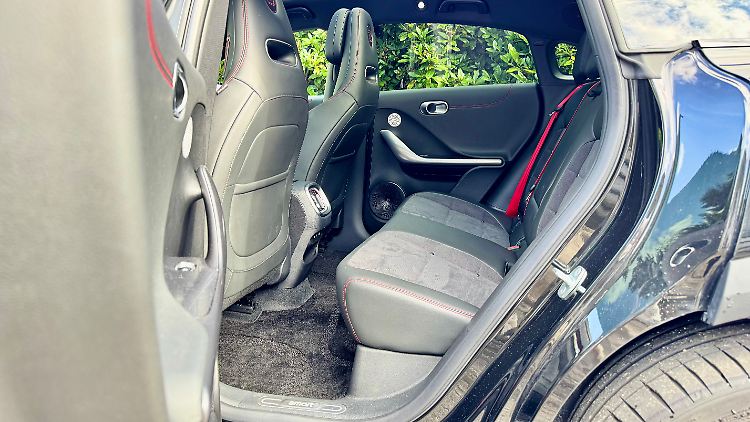

There is enough space in the rear of the Smart #3 to travel in an airy manner.
(Photo: Patrick Broich)
While the external appearance of the Smart candidates clearly bears the Mercedes signature, there is Geely Group technology underneath the metal. Namely the SEA platform for small segments. It was developed by the so-called Swedish company Zeekr Technologie Europe AB in Gothenburg. However, the name Zeekr also refers to the Chinese car brand – and, surprise, with the Zeekr X there is also a small car counterpart to the two Smart cars (but not in this country). The same applies to the recently introduced Lynk & Co 02, which, unlike the Zeekr, is making its way to Germany. And the Volvo EX30 also has SEA under the sheet metal, which ntv.de also discusses in this context as a third candidate to show how different vehicles on the same platform can be.
Inconspicuous power small cars
For reasons of fairness, the twin-motor edition of the EX30 is one of the tougher Smart Brabus versions. All three candidates have two electric machines with a joint production of 428 hp and 543 or 584 Newton meters (#1) of torque under the sheet metal – which necessarily results in all-wheel drive.
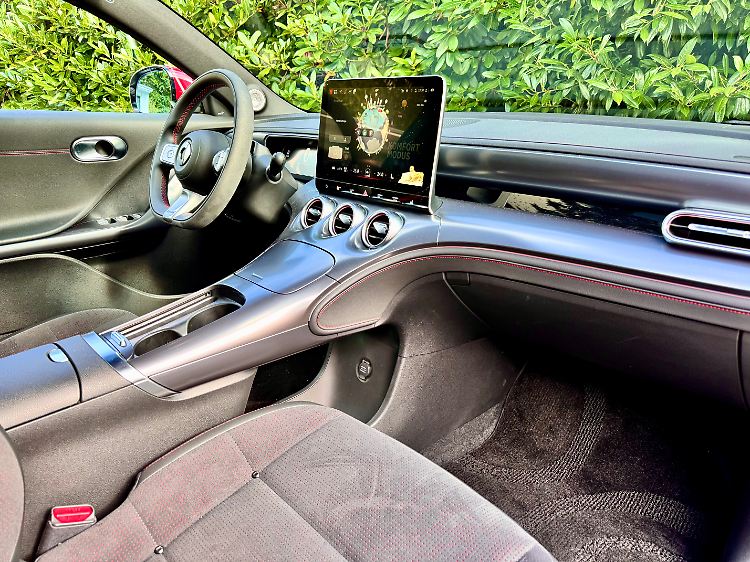

The large central screen in the Smart variants dominates the interior. There are also enough shelves and fine decorative seams that are pleasing to the eye.
(Photo: Patrick Broich)
That sounds pretty wild for this category of car. Especially since the two Smart ones don't come across as particularly well-rigged, even as a Brabus variant. A small Brabus lettering in the lower area of the rear doors indicates the extra portion of performance, that's it. The Swedish counterpart EX30 is even more subtle. Do you actually need that much power in a small car? No, but it's fun if you're not afraid of it.
Be careful of the accelerator pedal! Especially in sport mode, all three variants discussed here hammer forward incredibly brutally, with the Smart appearing more toxic than the Volvo, which, however, accelerates the most violently from 0 to 100 km/h in 3.6 seconds, according to the factory. The German-Chinese counterparts need a nominal 3.7 and 3.9 seconds respectively to reach country road speed. However, in all cases the forward gear is suddenly slowed down at 180 speeds. The small cars are not high-speed tourers, but that is hardly surprising.
Volvo narrower than Smart
Other things are surprising. The EX30, which is smaller at 4.23 meters long, feels much narrower on the inside. Ten centimeters more wheelbase on the Smart (2.75 meters) means a bit more legroom in the rear. And the approximately nine centimeters lower height of the Volvo (1.55 meters) makes it appear more compact inside, especially in the head area – just as you would expect from a city vehicle.
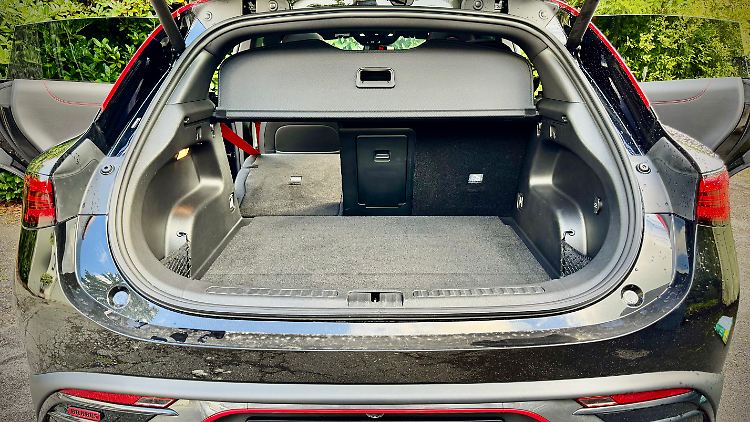

Compared to the other offers tested here, the Smart #3 offers the largest trunk with a capacity of around 1200 liters.
(Photo: Patrick Broich)
Smart #1 and Volvo EX30 agree on the maximum cargo space volume of around 1000 liters. However, the Smart #3 can carry almost 1200 liters. The hatchback is not only more elegant, but also more practical. In general, the architecturally rather modest Smart can pass as a family tourer. By the way, you can tell that they don't just have German genes. A playful touch from the Far East comes in the form of a funny fox that repeatedly appears on the display. Everyone has to decide for themselves whether this makes operating it more fun. But you can at least get through the menus quite intuitively.
In the EX30, which has a Scandinavian-cool interior design and stylish recycled seats in a “Nordico” design (leather replacement), you can switch off the most important assistants using a shortcut. But to eliminate the track vibration you have to dive into the menu.
Can small cars travel long distances?
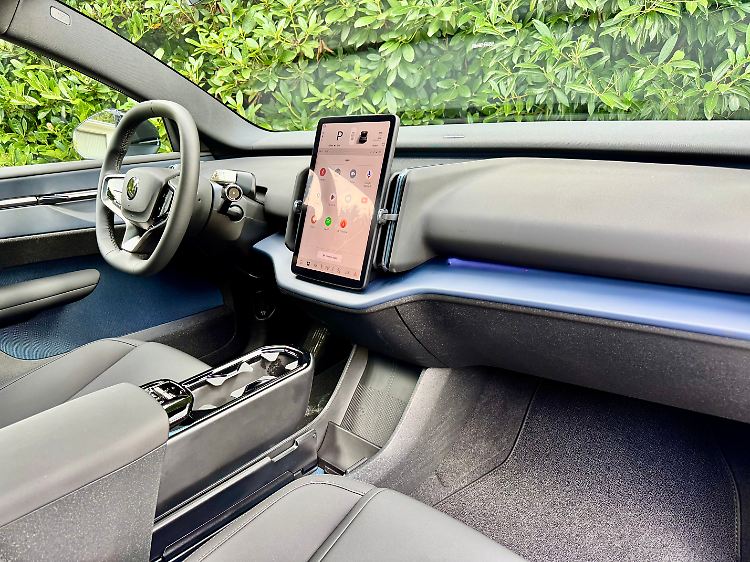

While the Smart offers a 16:9 screen plus an instrument cluster, in the Volvo you have to make do with a single touchscreen in landscape format.
(Photo: Patrick Broich)
Would you rather go on a longer trip with a Volvo or Smart? They are all sufficiently comfortable, although the Smart, even the Brabus, flows a touch more smoothly over bad roads in addition to its better space.
But anyone who goes on a longer journey with an adult small car will have to deal with the charging issue for better or for worse. And here it should be noted that you should be careful not to let the 62 kWh (net) smart battery drop below ten percent charge level. If you reduce the battery, which may not be optimally conditioned, to almost zero percent, you can stand at the charger for a quarter of an hour until it reaches ten percent again and the charging power slowly increases. Then, in cooler weather, it can take another 35 or 40 minutes to reach 80 percent. So it's better to go to the charging point beforehand.
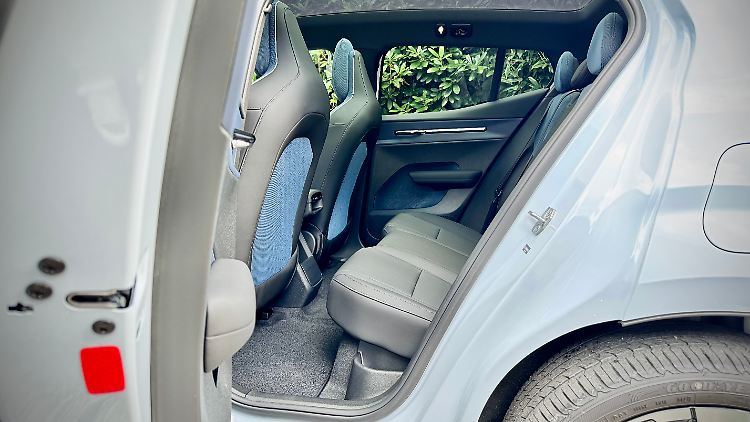

Things are a little tighter in the smaller Volvo EX30.
(Photo: Patrick Broich)
And 400 kilometers of WLTP range is more of a theoretical nature, with a real 300 you're certainly better off planning. The Volvo EX30 offers three kilowatt hours more (and nominally better charging performance), so that 50 kilometers more range is on the list. This chapter also belongs to electromobility. But Geely is working hard on the charging issue. The company promises 420 kW charging power for the upcoming Smart #5. Smart specifies 15 minutes for the lift from 10 to 80 percent.
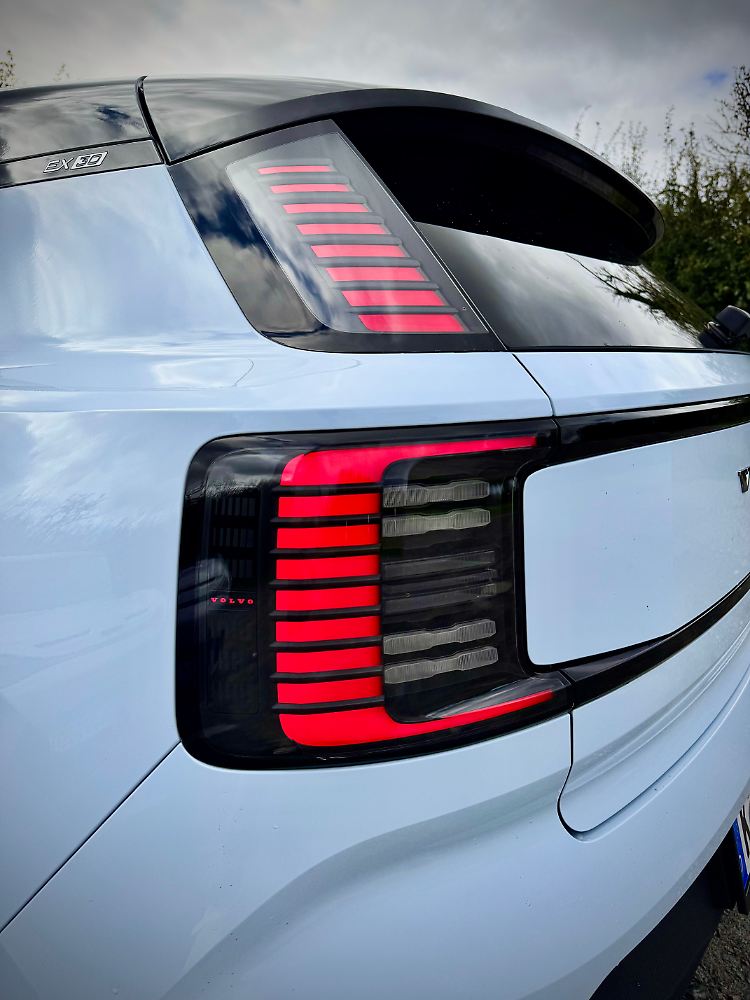

Striking LED taillights give the Volvo a high level of recognition.
(Photo: Patrick Broich)
The fact is that Geely manages to put a wide variety of vehicles on its wheels with an efficient platform strategy. And the quality impression is quite solid – across all brands. However, Geely products are not bargains either. The high-performance Smart #1 Brabus costs at least 48,990 euros. The more elegant #3 costs 50,990 euros. And if you prefer mobile goods with a Scandinavian touch, you have to plan with a budget of 55,290 euros if you want the two-motor version.
That's quite a lot of money, but potential customers can hope for attractive financing and leasing conditions. And if necessary, the “cheaper” (from 37,490 euros) entry-level variants have to do the trick. And after all, they are more than generously motorized.


















